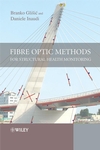An article on SHM of bridges appeared in "Government Technology "
http://www.govtech.com/gt/261440?topic=117693
Entitled "Wireless Sensors May Help Governments Monitor Health of Aging Infrastructure" it describes the consequences of the 35W bridge collapse and some of the technologies that might prevent similar accidents in the future.
In particular, the article introduces a wireless technology perfected at Clarkson University by the team of prof. Kerop Janoyan:
New York is one of many states re-evaluating bridge inspection methods after the Minneapolis bridge collapse by turning to SHM technologies. The state department of transportation's pilot program uses wireless sensors placed on bridges to transmit data on stress and vibration, and should warn if a bridge is weak or needs repairs. The system, designed by Clarkson University associate professor Kerop Janoyan, is expected to help engineers monitor the state's 17,000 bridges.
"Providing more information is the first step to a feedback system," Janoyan said. "Without information, you can't have any feedback when ultimately you're trying to control potential damage."
A New York bridge between Canton and Potsdam is serving as a test site - 40 wireless channel sensors affixed to the bridge log in real-time data to a base station. Each sensor is about the size of a few decks of playing cards, and cost about $200. The battery-powered sensors are connected to a computer that aggregates sensor data and determines whether to alert inspectors.
The article than describes the work of prof. Farhad Ansari at the University of Chicago on optical fiber sensors:
The Department of Civil and Materials Engineering at the University of Illinois at Chicago is developing a similar bridge monitoring approach, using fiber-optic wires instead of wireless sensors. A research program at the university called - Smart Sensors and NDT Laboratory - develops fiber-optic sensors for monitoring structures during construction and throughout their service lives.
The Illinois Department of Transportation awarded a $55,000 contract in September 2007 to the laboratory - to devise a system that can detect bridge scour - when sediment is washed from the bottom of the river and weakens a bridge's support. The project involves embedding a fiber-optic sensor in a rod and driving the rod into a river base near the piers.
Fiber-optic sensors assess a bridge's overall health by measuring microfractures and vibration frequency. Fiber optics promise many innovations for bridge monitoring since they are smaller and more flexible than electrical wires, are immune to interference from wireless devices, and aren't prone to fires or explosions, said Farhad Ansari, professor and head of the Civil Engineering and Materials Department at the University of Illinois at Chicago.
The article also describes projects at the University of Michigan on "sensing paint" at at Sandia National labs on remote sensing.
Wednesday, March 26, 2008
Subscribe to:
Post Comments (Atom)




No comments:
Post a Comment